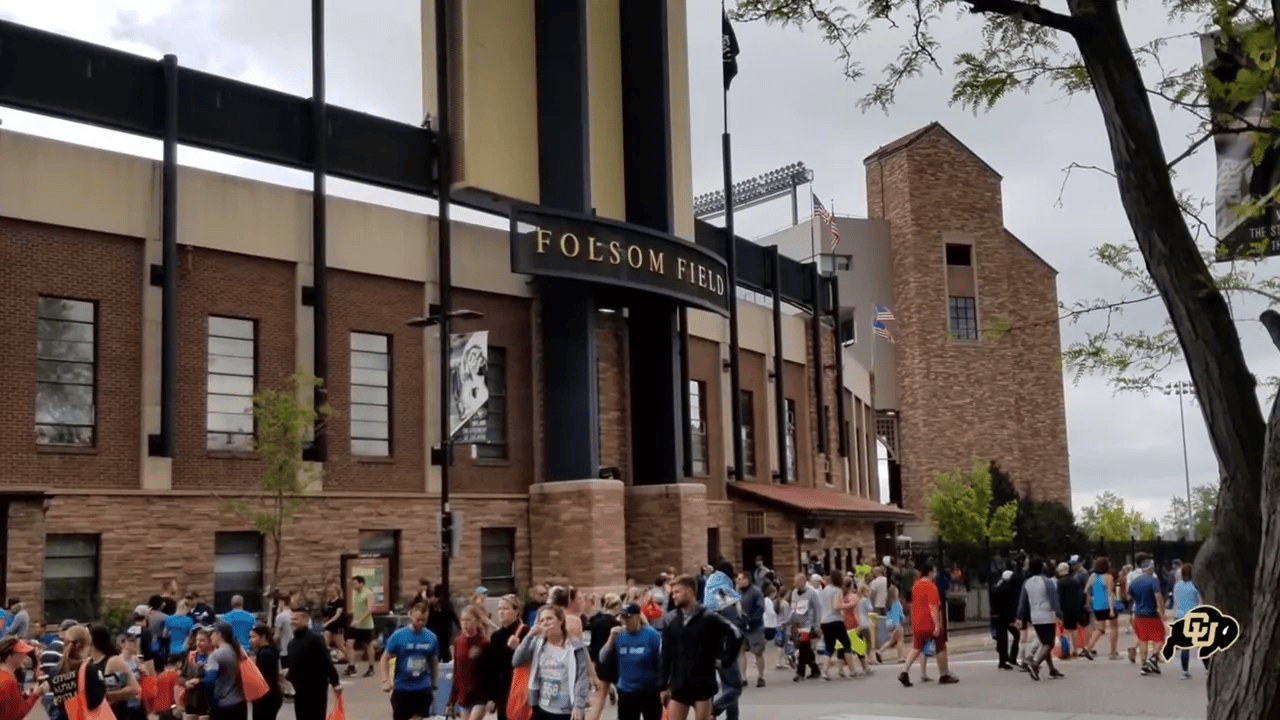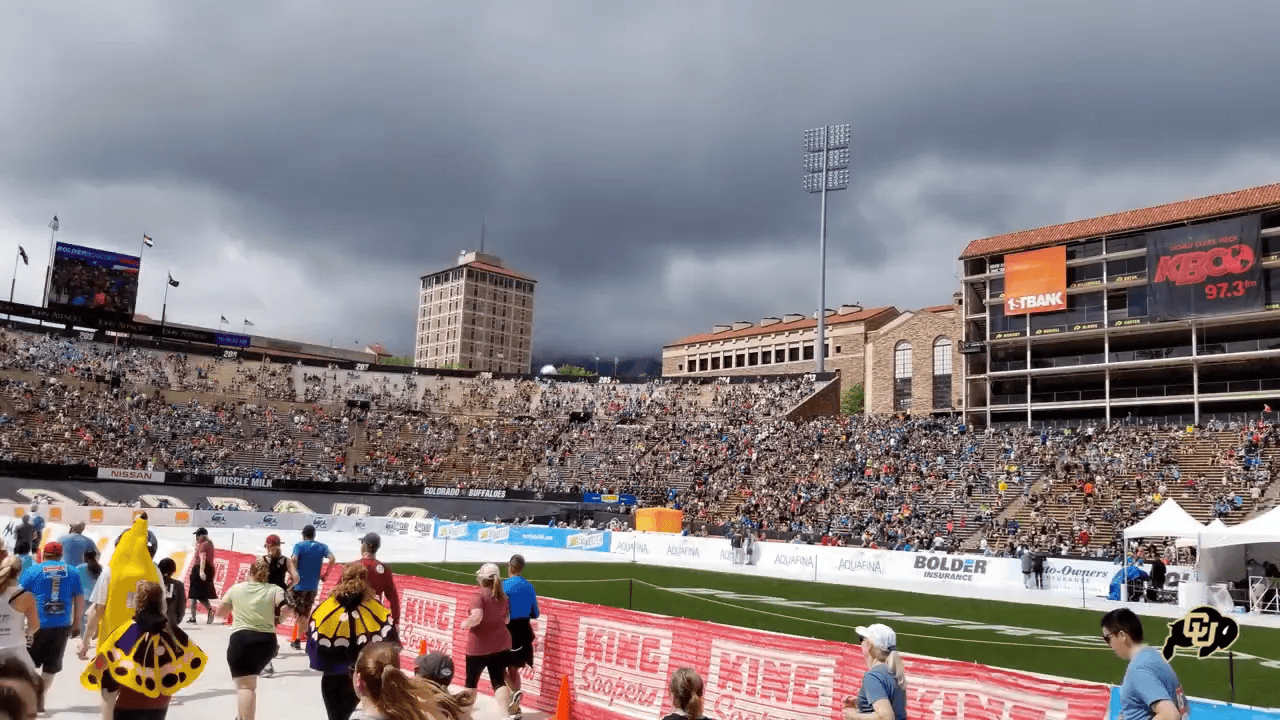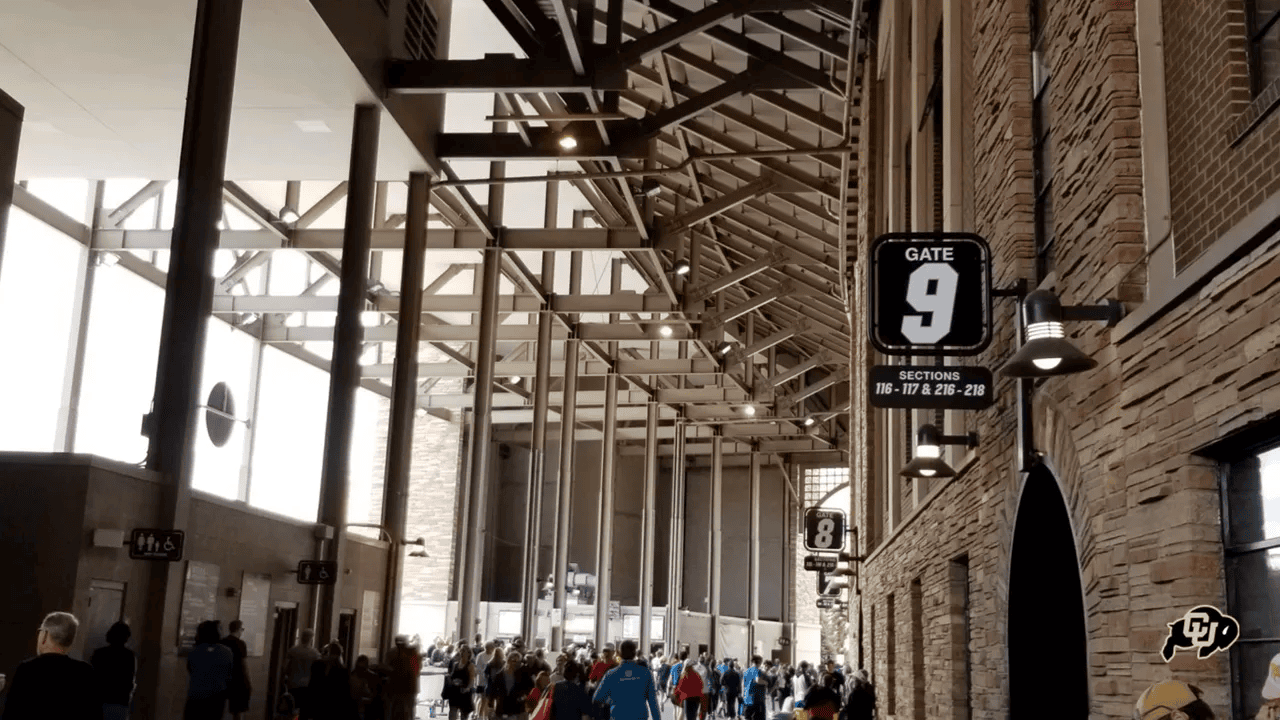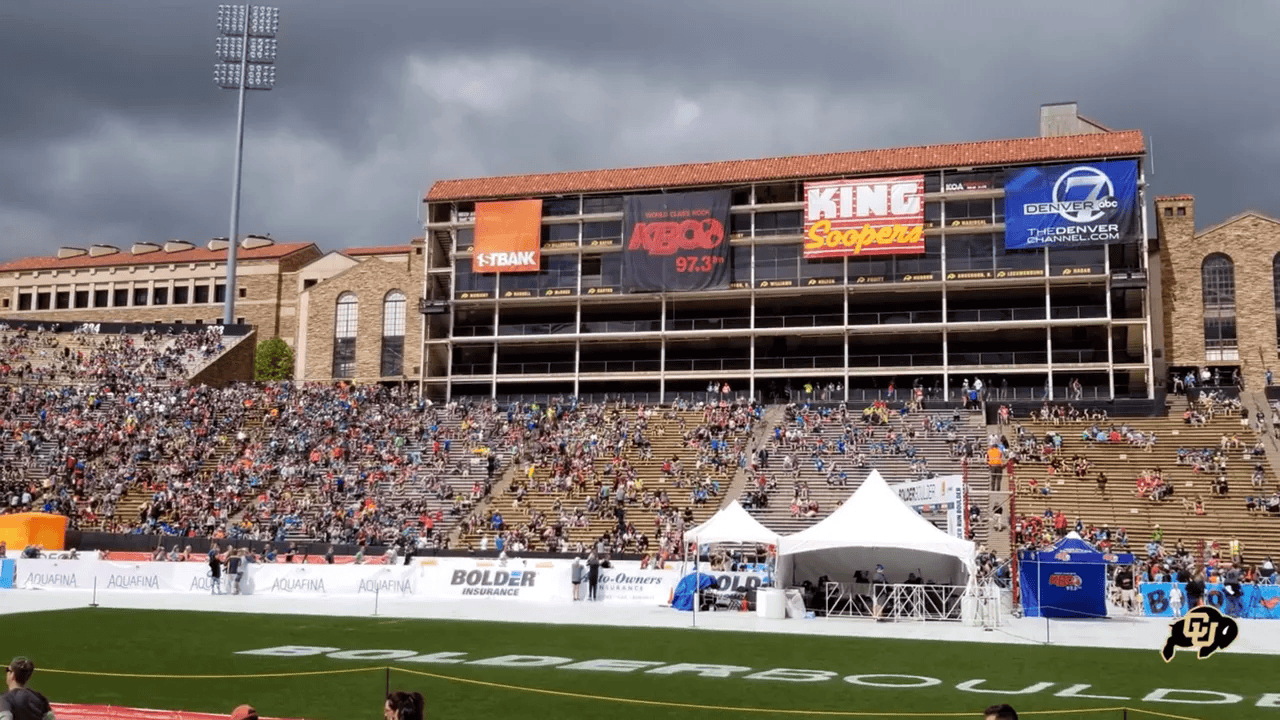Folsom Field: A Photographic Tour of CU Boulder’s Iconic Stadium

CU Boulder Map has assembled a tour of Folsom Field that highlights why this stadium ranks among the most scenic and beloved venues in college football. Nestled on the University of Colorado campus in Boulder, Folsom Field combines classic horseshoe architecture, warm brickwork that mirrors campus buildings, and sweeping views of the Flatirons and Rocky Mountains. The following guide walks readers through the stadium’s history, architecture, seating configuration, notable renovations, game-day experience, and practical visitor tips — all illustrated with on-site photographs captured during a recent visit.

The story of Folsom Field begins nearly a century ago. Opened in 1924 with an original capacity of 26,000, the stadium was built in the classic horseshoe configuration that still defines its overall shape today. Over the decades, a series of additions and renovations expanded capacity and modernized amenities while preserving the stadium’s historic character and connection to campus architecture.
History and Key Dates
Folsom Field has evolved steadily since its 1924 debut. Important milestones give a quick sense of the stadium’s transformation:
- 1924: Stadium opens with a capacity of 26,000 and a horseshoe shape that would remain a defining characteristic.
- 1956: A major renovation expanded seating and pushed capacity to roughly 45,000, adding a second wrap-around section that extended across the south and east sides.
- 1967: A fixed track that once circled the playing surface was removed, reflecting a growing focus on football-specific stadium design.
- 1968: Construction of a dominant six-story press box along the west side — a feature that now occupies nearly two-thirds of the west sideline.
- 1999: Natural grass returned to the field after a period using alternative surfaces, re-establishing a classic playing surface preferred by players and fans.
- 2003: Suites and club seating were added atop the east-side seating, bringing enhanced premium spaces to the stadium.
- 2014: The Crawford Club was installed in the northeast corner, adding modern hospitality areas with views of the mountains.
- 2016: Renovations added chairback seating to the north end zone, improving comfort for fans in that section.
- Present-day capacity: Folsom Field currently seats 50,183 spectators.

Architecture and Seating Configuration
One of Folsom Field’s most distinctive attributes is how its architecture preserves the feel of an older stadium while accommodating modern amenities. The stadium remains largely a single tier of seating — rows that rise from field level up toward the sky without an intermediate split deck or continuous concourse bisecting the seating bowl. This single-tier approach creates an intimate atmosphere where the crowd feels closer to the action.
The horseshoe plan, open at one end, remains visible from many angles. The west side preserves much of the original single-section look; later expansions introduced a second section wrapping around the south and east sides. These blended construction phases create visual layers that tell the stadium’s development story. Walking the east concourse, visitors can literally see the outline of the original stadium where newer structural framing and club-level additions were built over older exterior walls — a fascinating architectural palimpsest.
Press Box and West Side Profile
On the west side, a notable six-story press box added in 1968 dominates the profile of Folsom Field. It stretches along approximately two-thirds of the field, providing the necessary space for media, game operations, and premium suites while creating a dramatic vertical contrast to the otherwise low-rise bowl. Behind the press box, visitors can spot the old field house used by the basketball program prior to construction of the modern arena — a reminder of how the campus’s athletics footprint has shifted over time.

North and South End Zones
The north end zone sits opposite the press box and, following the 2016 renovation, includes chairback seating for improved comfort. Just beyond the north seating bowl rises the athletic center, topped with a video board that extends the gameday experience beyond the playing surface. In the south end zone, fans are greeted by bold gold lettering that spells “Colorado” against a black backdrop — an elegant, school-pride statement that’s visible across the stadium.

Brickwork, Campus Integration, and Visual Identity
The brick exterior of Folsom Field is a deliberate aesthetic choice that ties the stadium closely to the surrounding university architecture. Brick facades and masonry details echo neighboring buildings on the CU Boulder campus, ensuring the stadium feels like an integrated part of the campus fabric rather than an isolated sports box. This continuity is one of the reasons Folsom Field feels warm, classic, and authentic to long-time fans and newcomers alike.
Renovations, Premium Spaces, and the Crawford Club
Modernization efforts at Folsom Field have been sensitive to the stadium’s historic identity. In 2003, suites and club seating were added atop the east-side stands to introduce premium hospitality options without radically altering the lower bowl. The third, darker-colored level of seating visually anchors those suites and extends the premium experience.
The 2014 addition of the Crawford Club in the northeast corner further advanced hospitality offerings. The Crawford Club provides standing tables, a hospitality environment ideal for entertaining, and one of the best vantage points to take in both the game and the mountain backdrop. When games aren’t on the schedule, the Crawford Club is also rented for weddings and events — another example of how the stadium’s premium spaces serve both athletics and community uses.
Playing Surface and Track History
Folsom Field has not always been natural grass. The field returned to natural turf in 1999 after a period of using alternate surfaces. Today, the natural grass surface enhances player performance and adds to the visual appeal for photographs and broadcasts. Historically, a fixed track circled the stadium until 1967; remnants of a running event can be seen during annual races that use the stadium perimeter.

Events Beyond Football: The Boulder Boulder and Community Uses
Folsom Field is more than a place that hosts college football — it intersects with community life. A great example is the Bolder Boulder 10K, a major running event that uses the stadium’s space during the city’s signature race weekend. During the Bolder Boulder, runners may pass through or around the field, giving local residents the rare experience of traversing the bowl.
Beyond sporting and running events, the stadium’s premium spaces, like the Crawford Club and suite areas, double as rental venues for private events including weddings, receptions, and corporate gatherings. These multipurpose functions extend the use of Folsom Field year-round and reinforce its role as a campus and community asset.
Views and Scenery: What Makes Folsom Field Truly Spectacular
Arguably the stadium’s most celebrated attribute is the view. On clear days, the east side of Folsom Field frames the Flatirons and the Rocky Mountains, providing a dramatic natural backdrop that few stadiums can match. That mountain skyline — juxtaposed with the stadium’s brick facades, the green playing surface, and student-filled stands — creates picture-perfect moments that are beloved by photographers, alumni, and visiting fans alike.
Because the stadium is open to one side and sits on the Boulder foothills, many seating areas afford long sightlines to the mountains. This visual relationship between built and natural environments contributes significantly to Folsom Field’s reputation as one of the best scenic venues in college sports.
Elevation, Climate, and Game-Day Impact
Folsom Field sits at approximately 5,360 feet above sea level, making it the third-highest stadium among NCAA FBS programs. Only the venues at the University of Wyoming and Air Force Academy sit higher. The elevation affects everything from air density to how footballs travel; visiting teams sometimes notice the thinner air during kickoff returns and long passes.
Weather and seasonal variability also influence game-day conditions. Boulder’s mountain climate can produce brisk winds and rapidly changing conditions as mountain systems move through, so fans should plan layers and come prepared for sudden shifts in temperature.
Seating Types and Fan Experience
Fans at Folsom Field encounter a variety of seating experiences, reflecting the stadium’s layered history:
- Bleacher seating: Much of the stadium retains traditional bleacher rows, offering economical and energetic areas for the most die-hard supporters.
- Chairback seating: Found in sections such as the renovated north end zone, chairbacks add comfort for fans who prefer a cushioned experience.
- Club and suite seating: Added in the 2000s and expanded with the Crawford Club, these premium areas offer social spaces, food and beverage service, and elevated sightlines.
- Standing-room social tables: Found in club areas and near the Crawford Club — ideal for mingling while enjoying the game and the views.

Because much of the bowl is single-tiered, many seats feel close to the field — a major reason why fans report an intimate and intense atmosphere on game days. The variety of seating types also allows different fan experiences to coexist: a rowdy student section, comfortable families in chairback areas, and corporate guests in suites.
Unique Architectural Features and Visitor Observations
One of the more unusual experiences highlighted during the photographic tour is the east-side concourse where visitors can actually see the older exterior wall and outline of the stadium upon which new press boxes and suites were built. Walking this concourse, a visitor may technically be outside the stadium while still traveling through a space commonly used as a concourse. This layered exterior/interior experience offers a tangible sense of how the stadium grew and adapted over the decades.

Other small details contribute to the stadium’s charm: the cohesive brickwork, the tasteful south-end “Colorado” lettering, and the way older architectural lines meet modern structural elements without feeling jarringly mismatched.
Practical Visitor Tips
Whether visiting for a game, event, or a photography walk-through, these practical tips help get the most out of Folsom Field:
- Arrive early: Early arrival allows time to take in the mountain views from the east side and to explore the concourse where architectural changes are visible.
- Dress in layers: Boulder’s elevation and mountain weather can produce rapid temperature changes. Layering ensures comfort throughout an afternoon or evening event.
- Choose seating with views: If scenery matters, seats along the east side and upper club areas offer the best sightlines to the Flatirons.
- Parking and transit: Campus parking is limited on game days; using campus shuttles or public transit (or planning to park farther away and walk) is recommended.
- Photography: Golden hour (just before sunset) produces incredible light on the brick facades and mountains. Bring a wide-angle lens to capture both stadium and skyline in a single frame.
- Event rentals: For non-game-day events, inquire about the Crawford Club and suite spaces — they are popular wedding and corporate venues with unmatched mountain views.
Context: How Folsom Field Compares to Other College Stadiums
In the mountain West, Folsom Field stands out for its combination of classic architecture and dramatic setting. While stadiums such as War Memorial Stadium at the University of Wyoming and Falcon Stadium at Air Force are at higher elevations, Folsom Field’s urban campus setting and adjacency to the Flatirons create a different kind of scenic power — one that intertwines campus life and natural landscape rather than feeling remote or strictly military in character.
Additionally, Folsom Field’s single-tier bowl and brickwork provide a historic intimacy that many modern multi-deck stadiums lack. The result is a venue that is both historically resonant and visually striking — a place where tradition and setting combine to create memorable game-day experiences.
Preserving Character While Modernizing
Folsom Field’s renovations over the years reflect careful stewardship: each new addition has aimed to increase comfort and hospitality while maintaining the bowl’s character. The intent has been clear — to enhance the fan experience, create revenue-generating premium spaces, and preserve the stadium’s connection to campus aesthetics and the mountain backdrop.
From returning to natural grass in 1999 to adding the Crawford Club in 2014 and chairback seating in 2016, these incremental upgrades have preserved the essence of Folsom Field while ensuring it remains competitive with contemporary stadium facilities.

Frequently Asked Questions (FAQ)
What is the seating capacity of Folsom Field?
Folsom Field currently seats 50,183 spectators. The stadium’s capacity has changed over the years through renovations, growing from the original 26,000 in 1924 to larger capacities as new sections and premium areas were added.
When did Folsom Field open?
The stadium opened in 1924. Its horseshoe design and much of the original footprint have been preserved even as the facility received periodic expansions and modernizations.
Is the playing surface natural grass?
Yes. Natural grass was reintroduced in 1999 and remains the stadium’s playing surface.
What is the elevation of Folsom Field?
Folsom Field sits at approximately 5,360 feet above sea level, making it the third-highest FBS stadium after Wyoming and Air Force. Elevation can influence game dynamics and weather patterns during events.
Are there premium seating options?
Yes. Suites, club seating, and the Crawford Club provide premium hospitality as well as spaces that can be rented for private events such as weddings or corporate functions.
Was there ever a track at Folsom Field?
Yes. A fixed track used to circle the field but was removed in 1967. Today, the stadium is configured solely for football and related events.
What makes Folsom Field special?
The stadium’s east side opens to dramatic views of the Flatirons and the Rocky Mountains. Combined with the stadium’s brick architecture and campus setting, these views make Folsom Field one of college football’s most picturesque venues.
Can visitors explore the concourses and see historic architectural details?
Yes. The east concourse in particular reveals the older exterior outline where newer suites and press boxes were constructed above original walls, giving visitors a unique window into the stadium’s construction history.
hy Folsom Field Is Still a Fan Favorite
Folsom Field endures because it marries authentic campus architecture with one of the most spectacular natural settings in college sports. CU Boulder Map’s photographic tour underscores how the stadium’s horseshoe form, brick facades, single-tier bowl, and mountain backdrop work together to create a place that feels both timeless and alive. The careful sequence of renovations — from restoring natural grass to adding modern hospitality spaces — demonstrates a commitment to preserving character while improving comfort and functionality.
For fans, photographers, alumni, and visitors, Folsom Field offers more than a football game: it provides a full sensory experience where architecture, athletics, and alpine scenery converge. For those planning a visit, arriving early to soak in the Flatirons, choosing seats with eastern views, and exploring the concourses will reveal the subtle details that make Folsom Field a truly special stadium.
